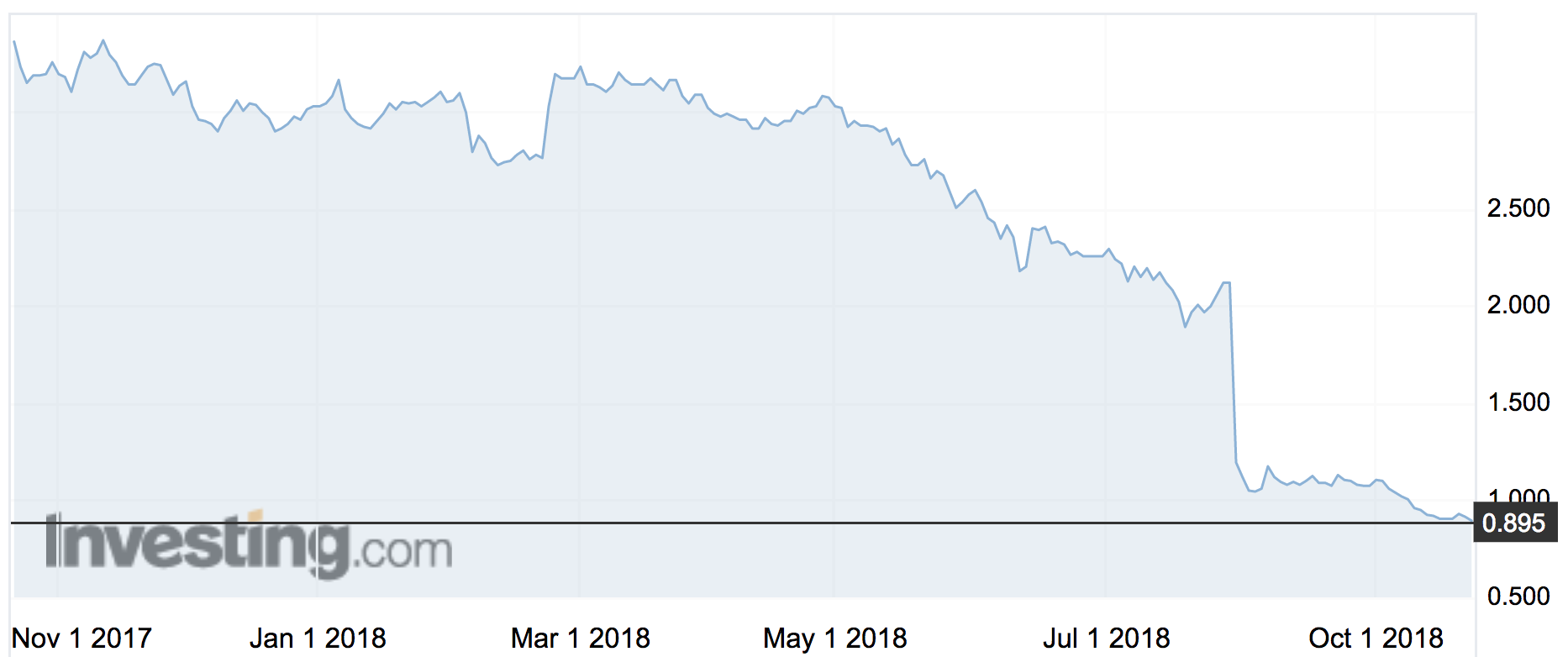RCR sacks 115 sparkies as another solar project face-plants
Tech
Tech
It’s understood engineering company RCR Tomlinson has sacked some 115 electricians working on a 110-megawatt solar farm in Wemen.
The Electrical Trades Union claims RCR (ASX:RCR) “locked up their bus and left the workers stranded 100km from the nearest town”.
An RCR spokesman said it had “downsized the workforce at the Wemen solar farm given the current status of the project” due to productivity issues.
The spokesman confirmed 115 workers had been let go but did not elaborate on the productivity issues.
RCR denies the layoffs are a result of under-bidding for the Wemen contract.
The project is, according to the Wemen Solar website, in commissioning phase this month and due to be complete by January 2019.
RCR doesn’t expect the completion date to be delayed in spite of those productivity issues.
RCR has been plagued for months by downgrades and problems at its solar projects, which accounted for a substantial portion of the capacity being built in Australia.
Chief Paul Dalgleish stepped down in early August following cost blow-outs.
Later that month RCR said it would take a $57 million write-down on the $315 million contract values for the 150MW Daydream and the 50MW Hayman solar farms, owned by Edify Energy in north Queensland.
It raised $100m from investors in September and added $25m to its debt facilities.
RCR stock fell 2 per cent on Monday evening to 89.5c — 1c above its 52-week low.

Gridlocked
Byond RCR’s current problems, companies engaged in solar engineering, procurement and construction (or “EPC”) have faced issues around grid connection standards and Chinese manufacturing.
Green Energy Markets director Tristan Edis says developers and EPC companies have been falling foul of the energy market operator’s interpretation of what is needed in order to connect to the grid.
The term “fragile” transmission lines became a political go-to line in October, meaning grids that are unable to cope with large amounts of intermittent energy from wind and solar farms.
As a result the market operator AEMO requires developers to add extra equipment to strengthen the grid if they are connecting in a ‘weak’ area.
Mr Edis says this has caused delays for a “large proportion” of projects that have been committed for construction in the last 12-18 months — and if the AEMO decision on what is needed after the project has been funded, that can cause significant cost overruns and wipe out margins.
That happened to the Total Eren Kiamal Solar Farm near Wemen, which had to add a costly synchronous condenser to its 200MW farm — a turbine that can be launched at short notice to stabilise the grid when voltage or frequency deviate too far from safe levels.
RCR did not respond before deadline on whether this was a problem for the Wemen farm or a cause of the productivity issues.
“There are a range of new entrants in Australia and some are very experienced operators in Europe but it doesn’t mean they are familiar with Australian conditions,” Mr Edis said.
“I say surely this can’t be an ongoing issue because everyone should have their eyes wide open about these issues… certainly by now.”
Made in China
Mr Edis says another problem that has caused troubles around the world is Chinese manufacturers which dominate global solar panel production.
US installers raced to buy Chinese solar panels last year before the US imposed tariffs, while the Chinese government shut down several factories.
The high demand and fewer factories meant manufacturers sold out and named their prices.
Mr Edis said he knew of EPC companies which had bid for a project with panels they expected t be delivered at one price, only to have the manufacturer abruptly change the deal.
“Chinese companies have a habit of thinking that contracts are optional,” he said.